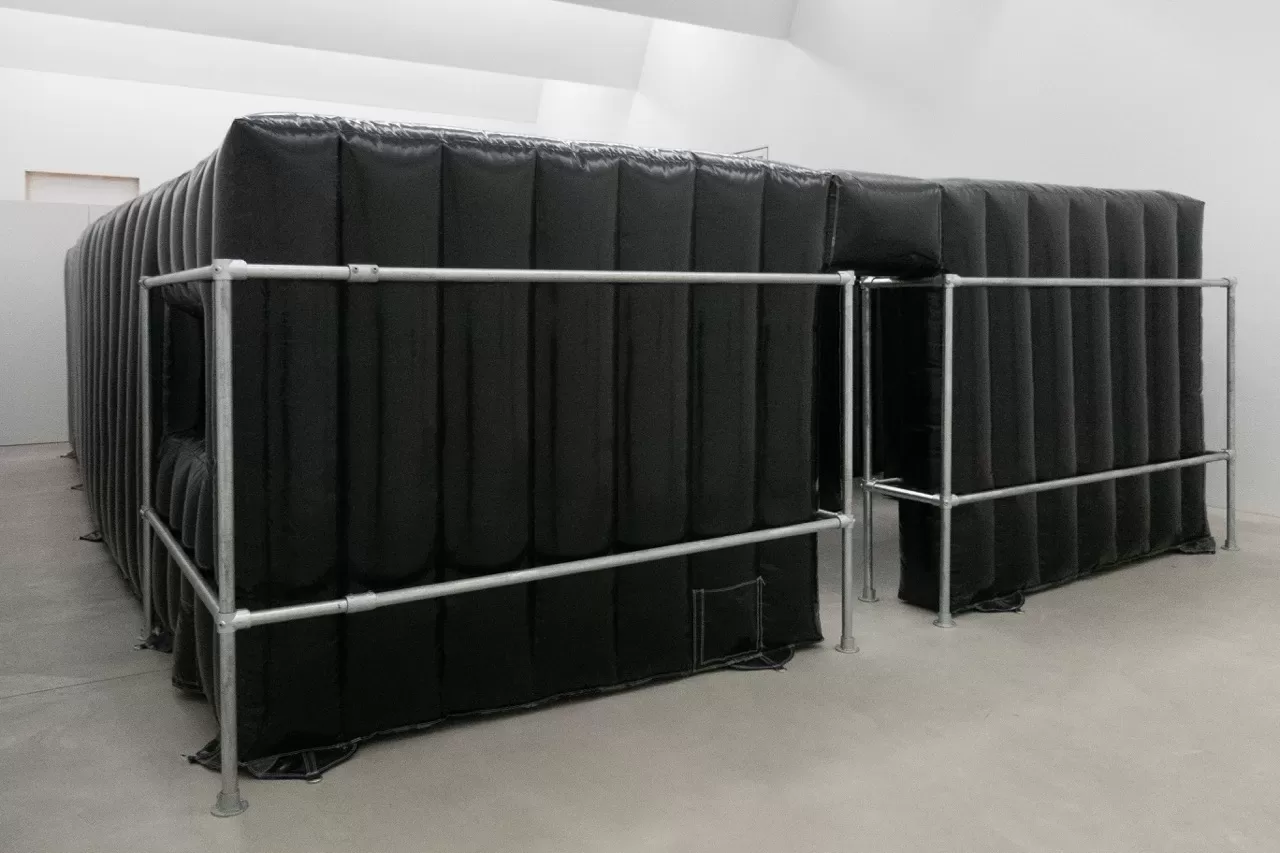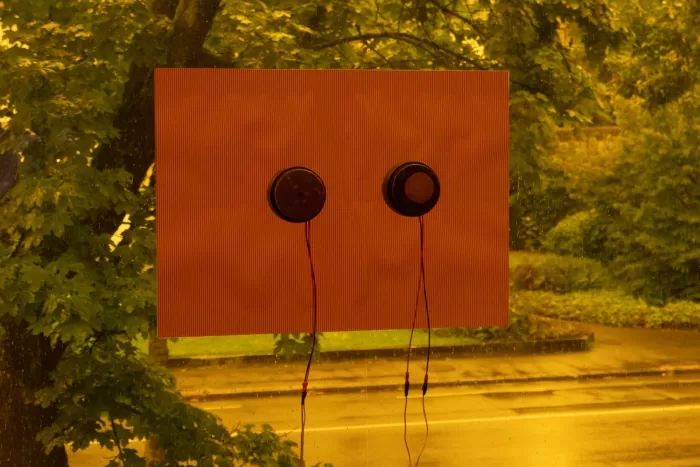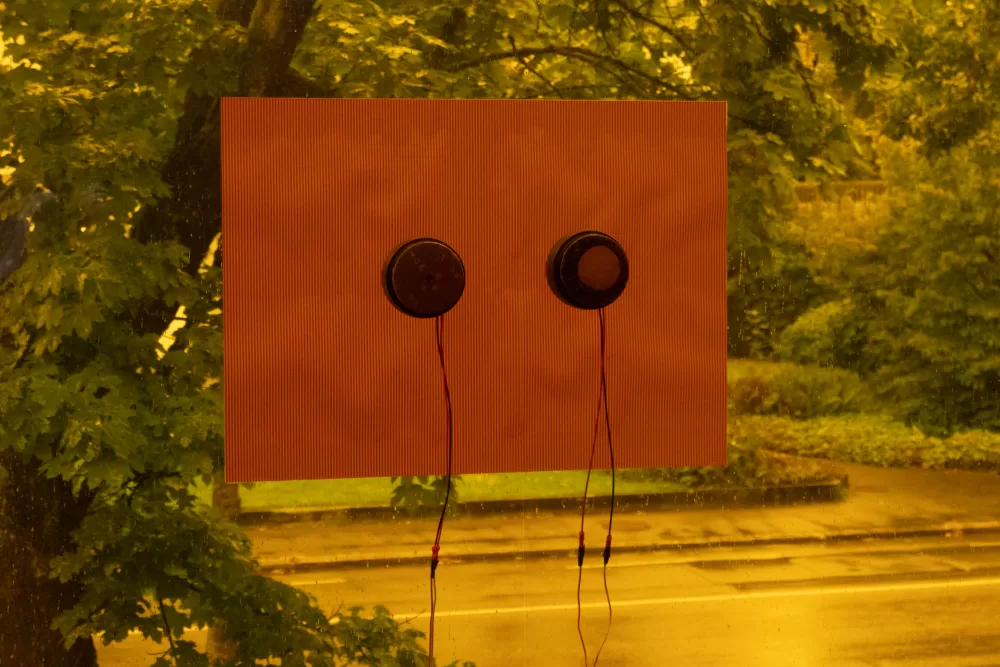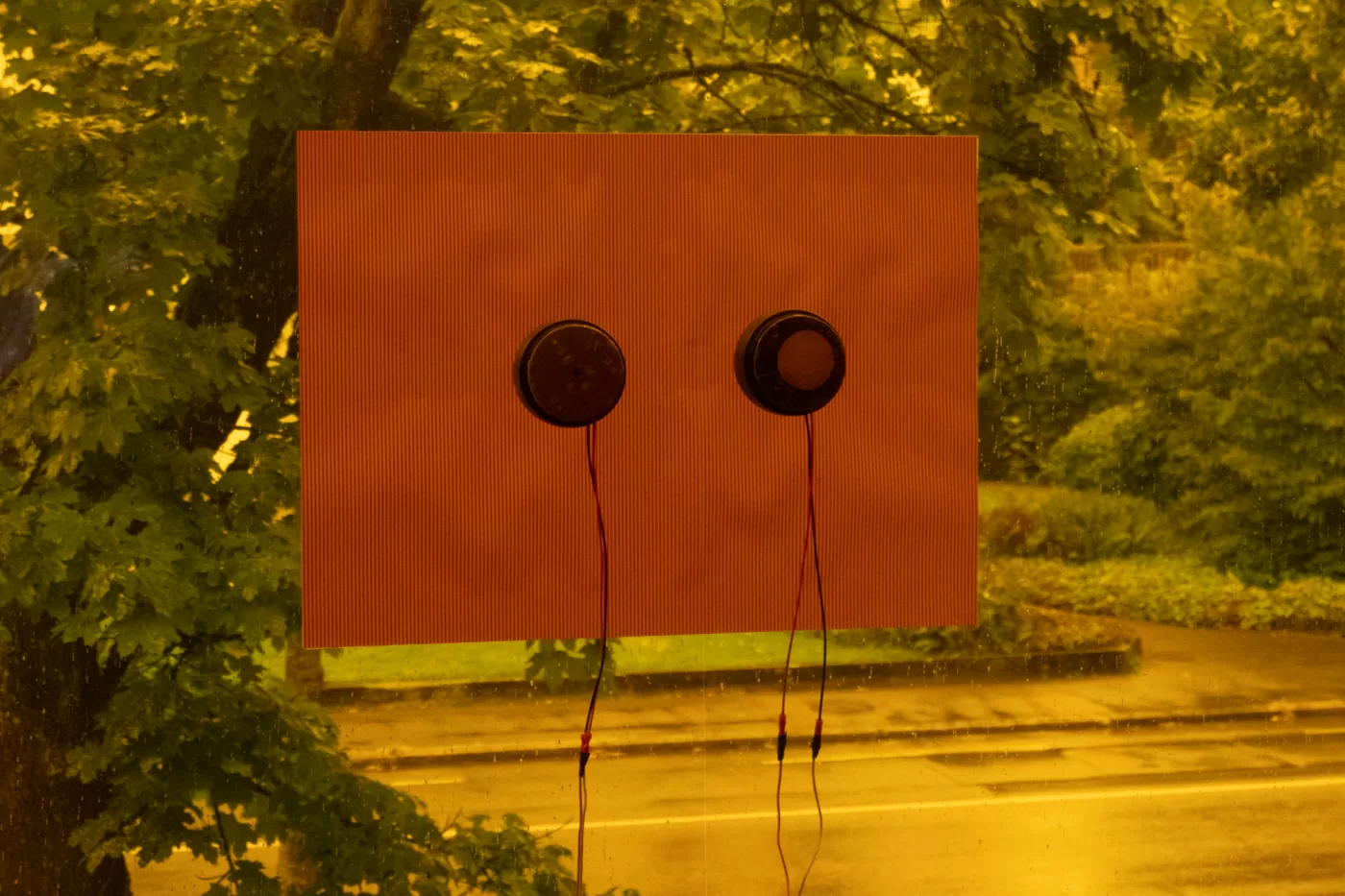Jan Vorisek on his maze of angst
7 min read
The Swiss artist Jan Vorisek adapts space and sound to produce unsettling, multi-sensory experiences
Broken cable ties, styrofoam, packing and insulation materials are examples of objects used to create the dystopian cityscapes or spaceships found in on the sets for early sci-fi films such as Ridley Scott’s Blade Runner (1982). “I like the subtext in the production of early sci-fi movies, that the vision of a broken future is crafted from old packing material, a future projected on trash – ironically waste and consumer culture is what makes our world decay and slowly turn into a dystopia,” says Jan Vorisek, walking me through his institutional show ‘Edge, Hour, Substance’ at the Kunst Museum Winterthur in Switzerland. “My work is driven by something subconscious.” He explains as the sound of a drone reverberates, becoming heavier as the final room approaches where Devotion Strategy (2023), an inflatable jet-black plastic maze occupies the space. The maze refers to an ancient symbol of the stomach and the digestive system as a place of fear. “I tried to make claustrophobic, membrane-like corridors, setting up traps or dead-ends.” The maze evokes etymology; in German, “Enge”, the etymological root of “narrow” means both “Angst” and “fear”. And in that sense, Angst is also related to “Kummer”- “sadness” which means to care for something. “I’m interested in this desire, an ambiguous spectrum between repulsion and attraction.” The space is lit by an orange-tinted window from which two modular synthesiser speakers are attached, picking up resonant sounds. “My interventions are site-specific: the window has been turned into a speaker. The sound carries the audience through the space.”

I first met Vorisek at one of the House of Mixed Emotions (or H.O.M.E) club nights, an event that he co-hosts with artists whose practices focus on electronic music and visual art. He explains that music, club nights and gatherings automatically inform the reading of the work, playing with notions of time, space and occupation. “With sound, you can go very esoteric in terms of the frequencies, playing with how things are tuned: frequencies of the universe, good and bad frequencies, transcendental frequencies. There’s a lot of ground ontologically with sound.” Vorisek’s affinity with experimental music resonates in his process: sampling different materials, modes and models according to his mood, research interests and the historical and architectural context of where the work will be presented. “When I make assemblage, I question, ‘what would the noise of the production and lifecycle sound like?’ I pick objects according to the sound that the materials would make. Something made out of ceramic makes a very different sound to a plastic object.”
Working across sculpture, installation, sound and performance, Vorisek’s work is consistent in its use of found objects, industrial materials and site specificity. Describing presentations of his work as a “dramaturgy,” his works are architectural narrations, enabling a metamorphosis of a space. Spanning five rooms of the museum, Vorisek explains that the sequencing of each work in ‘Edge, Hour, Substance’ is in tune with the space of the museum’s modular wall system. Even transitional spaces such as corridors and windows are utilised, heightening the audience’s viewing experience, “I made this corridor to elongate a passageway from one room to another, to enhance a sense of theatricality.” Transforming the traditional museum setting and whilst doing so, dismantling the hierarchies of exhibitions, production and display, the immaterial is the focus for Vorisek, “each corridor is a score for a different sound piece.”
7 photos
View gallery
1 of 4
The disintegration of systems and structures is most evident in the recurring fragmentation and reconstruction of shape and material. The grid is one recurrent motif, as shown in Anatomy of delusion (2023). “With the grid, the human brain is wired to make connections to mapping, but at the same time it’s very glitchy.” The grid is a starting point for exploring a continuum, ranging from its association to “architectural planning, Superstudio [the Italian design collective], and as a formal device for painting landscapes and finding perspective.” Breaking down its rigidity conjures new characteristics, of porosity and transparency, with a capacity to act as a barrier. Other works reference remnants of a previous time, “the floor models remind me of communist subway stations in Prague when I was a kid.”
Examining each object, it is difficult to determine what is made, what is found, what is copied and which objects have been sampled. Their transient nature is not static, rather through the simple disruption of the static by the continuous, their identity remains dynamic. Such is Vorisek’s way of working: “You take a sample and you add something onto it, each object is an accumulation of effects and affects, each station adds another reverb or delay.” The continuous ruptures of each structure, environment and material allude to the signs marking a systemic breakdown – a sign of our times.
Jan Vorisek ‘Edge, Hour, Substance’ runs until 7th January, 2024 at the Kunst Museum Winterthur. www.kmw.ch


